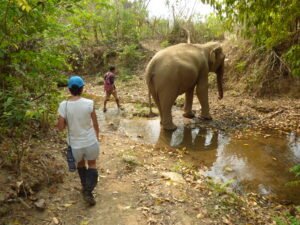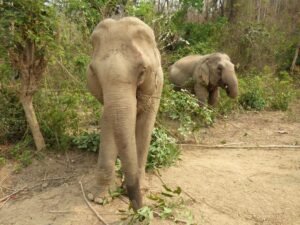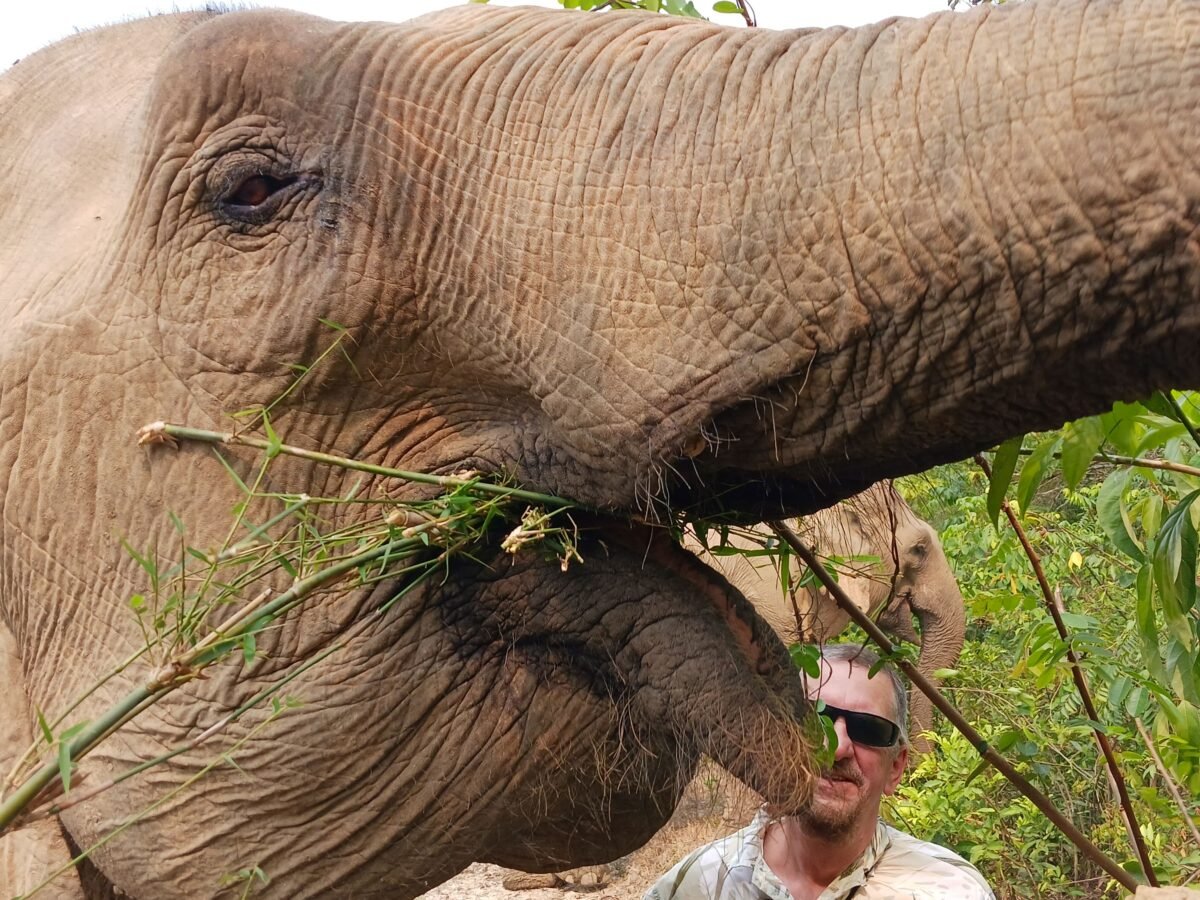If you should be visiting Laos and staying in the ever-popular Luang Prabang area you might be tempted to visit one of the much touted nearby elephant camps. Booking offices for the camps line the main street of the town and you are spoilt for choice. Hopefully you will be looking for an ethically operated one which does not condone elephant riding. The MandaLao Elephant Conservation is certainly one of those.
We recently had the pleasure of spending a day with their elephants and staff and came away with extremely positive feelings that Asian elephants can be saved and allowed to have, as they put it, “dignified and comfortable lives in harmony with nature.” We came away impressed with their philosophy and professionalism.
But it is not the same at all the elephant “rescues” in the area and throughout Laos. Elephant riding is not banned and it is common to see elephant camps advertising tours for riding. There was in fact a new elephant riding camp under construction at the time of our visit.

One of the rescued Mandalao elephants with scars caused by the howdah seat used for tourist riding.
To ride or not to ride elephants
The ethics and welfare aspects of riding them is constantly under review and debate with some experts going so far as believing it is good for them. This does rather stretch the credibility though. All purport to rescue ill-treated animals from logging and tourists attractions with low welfare, but many who obtain them are tourist attractions themselves and welfare standards can vary.
MandaLao Elephant Conservation and the nearby Elephant Conservation centre do seem to have got it right. Mandalao are focused on allowing the animals to live as natural a life as possible, roaming, foraging and forming bonds to create a herd that can be released.
Visiting MandaLao Elephant Conservation

Trekking with the elephants. You are provided with water canteens and legging boots.
It is a short road trip to the MandaLao headquarters, a new state of the art complex perched above the river with great vistas. After a welcoming drink we sat and had a lecture from the genial and visionary elephant expert Mr Prasop Tipprasert who is their chief consultant and often referred to as the elephant whisperer. It was extremely educational, but perhaps too technical for the average tourist who just wants to see the elephants as soon as possible.

Foraging for themselves under the watchful eye of the mahouts. It is wonderful enjoying the serenity of their company.
Mr Tipprasert hails from the Thailand Elephant Conservation centre where over the last three decades he has been the originator and pioneer of the Positive Reinforcement Training of elephants. Basically, this means training with rewards such as a treat or praise when behaving well. He also successfully introduced the concept and establishment of having forest buffer zones around elephant sanctuaries so as not to upset adjacent farmers and residents and made it possible to release some elephants back into the wild.
The centre operates a morning and afternoon group of up to eight people and an all-day group restricted to four, which although expensive is by far the best experience. We took part in the all day and were the only ones and were taken across the river in a canoe to meet the two elephants we were to spend our day with. We spent a leisurely morning trekking with them and their mahouts and an extremely informative and helpful guide named Tanh who had a great sense of humour.
A new arrival suffering awful repetitive behavior and at the beginning of her rehabilitation. Filmed by Debbie Jacob.
Fascinating to watch their natural habits
We watched as they foraged and used their fascinating natural skills and habits such as breaking off branches stripping the leaves while holding them with their massive feet. It was all done at their pace and the mahouts seemed devoted to them. We then had lunch at a jungle camp, a swim in a small waterfall and a final trek back. It was wonderful to see the elephants just being elephants.
So, if you do find yourselves in Luang Prabang I can recommend MandaLao. It is professionally run with no hint of touristy tactics and not used by drop in tours. Every visitor provides financial help for the care of the animals and in expanding their operation to give even more retired elephants the peaceful life they deserve amongst friends, both human and of their own kind.






